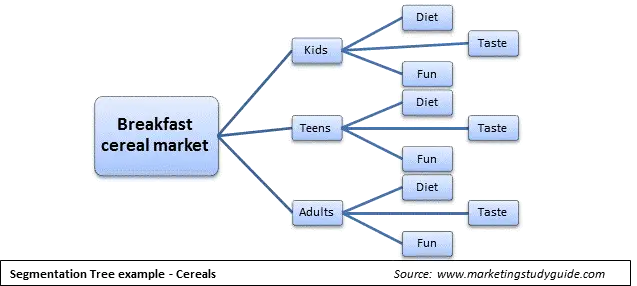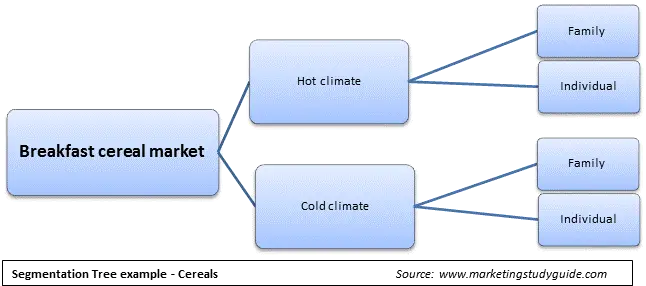Contents
Market Segmentation Examples
Here is a quick overview of some examples of how to segment a market. Please note that this website contains quite a number of market segmentation examples (click here).
Type of Firm |
Segmentation Base |
Possible Market Segments |
| Banking | Demographic segmentation | Young couples, young families, older families, pre-retirement, retired |
| Mobile phone carriers | Benefit segmentation | Highly social, work-oriented, safety contact, status symbol |
| Frozen food manufacturers | A broad mix is used here:
|
Single households, diet-conscious, family dining, parties, budget-conscious, variety seekers |
| Toothpaste | Benefit segmentation | Teeth whitening, sensitive teeth, fresh breath, cavity protection, tartar control |
| Restaurant | Behavioral segmentation | Regulars, special occasion, business lunch, quick spot |
For more information you should also review Choice of Segmentation Bases (or Business Segmentation if appropriate).
The following table includes more examples,
along with a rationale for this segmentation approach
Type of Firm |
Suitable Segmentation Approach |
Rationale |
|
Cosmetics and perfumes firms |
Demographics (gender, age) OR Benefit |
Cosmetics and perfumes firms could effectively use a variety of segmentation variables. For example, males and females would have different needs, as would younger and older consumers. Benefit segmentation could be used (some possible could include: skin repair, remove wrinkles, glowing skin, acne reduction, attractive look, social status, celebrity identification). |
|
Car manufacturer |
Psychographic (social class) OR Geographic |
Segmenting by social class makes sense for this product category, as cars are often a reflection of a consumer’s lifestyle and used as a social symbol of success. Geographic segmentation (such as urban versus rural) could also be an effective approach |
| This website also has a very detailed example for market segments for retailers (such as supermarkets). | ||
Segmenting Differences in the Same Market
Even firms operating within the same industry can segment the market in different ways (often for strategic reasons). Using the breakfast cereal market as an example, the following diagrams highlight some different possible approaches.
This first segmentation example uses age group (demographics) and then benefits sought to construct nine different market segments. Obviously, each of these segments would be of different sizes and attractiveness, but it does give a good overview of the range of consumer needs in the market. Let’s now look at another approach using the same market.
In this example, two quite distinct segmentation variables have been used. The first base is a geographic variable of weather/climate and the second is a psychographic (lifestyle) variable relating to whether the breakfast meal is typically consumed in a family setting (people eating together) or whether the household members usually eat alone.
Remember the point of these examples is to demonstrate that the same market can be segmented and viewed in many different ways. By doing so, the marketer gains a greater understanding of the overall market and is more likely to identify unmet needs (sometimes referred to as market gaps, which are identified through using perceptual maps).

